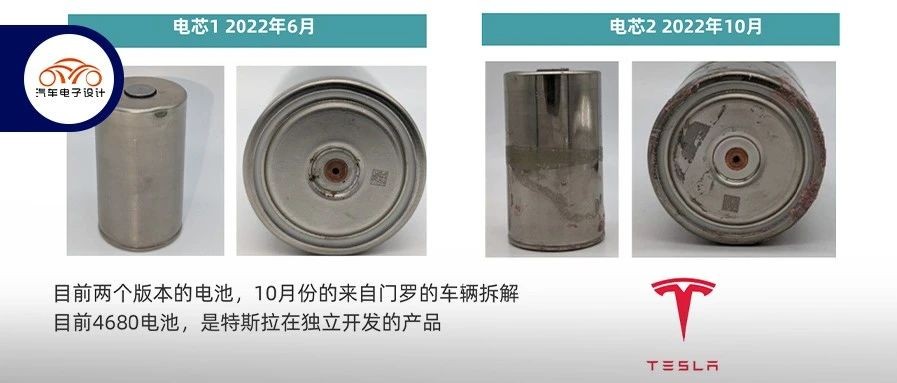Author: Zhu Yulong
After the dismantling of the 4680 battery cells by Mr. Munroe, each cell was sold at a high price. The Energy Storage and Conversion Laboratory (LESC) at the University of California, San Diego, and the Pritzker School of Molecular Engineering at the University of Chicago conducted tests on the battery, and I would like to share some of the test data with you.

The positive and negative current collectors of the 4680 battery cell are welded on both sides of the winding:
- The top includes an insulation cover placed on the positive electrode, and the aluminum positive electrode current collector is welded to the positive electrode column of the shell in the middle.
- The bottom uses a copper negative electrode current collector to electrically contact the negative electrode top cover, and the negative electrode top cover has a liquid injection port in the middle (also serves as a positioning function), and the negative electrode tab is connected to the entire shell.

Information of Battery Cell Dismantling
Positive Electrode
From the design perspective, the data of the internal pole piece of 4680 are as follows:
- Positive electrode thickness of 85µm
- Aluminum foil thickness of 9 to 10µm
- Thickness of the aluminum current collector end plate is 400µm
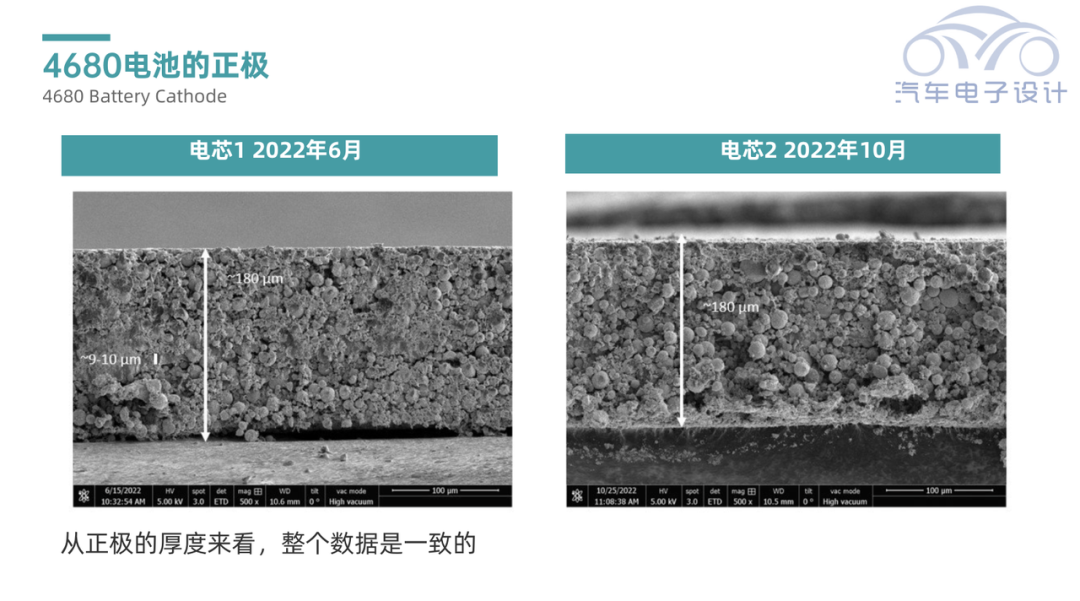
The positive electrode of the 4680 battery cell uses NCM811 material. The nickel content of the material in the first version of the energy-dispersive X-ray spectroscopy (EDS) analysis was 81.6%, and the nickel content in the second version was 81%.
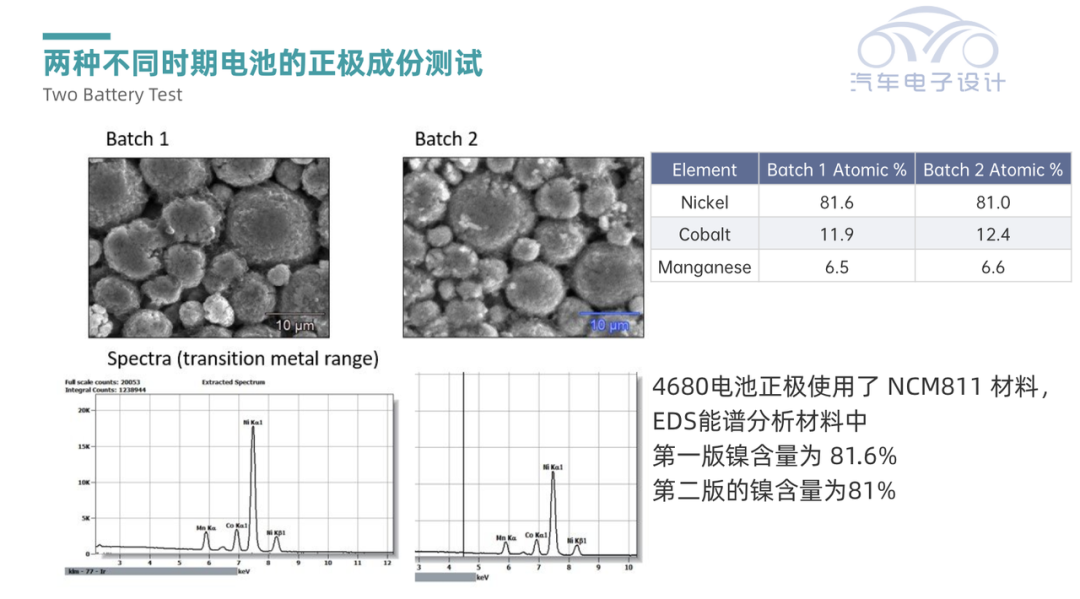 ### Negative Electrode
### Negative Electrode
Currently, there is no silicon in the negative electrode material used in the 4680 battery (around 10% in 2170 batteries), and graphite is used as the material. The thickness of the negative electrode sheet is 121 μm, including a copper foil of 6-8 microns.

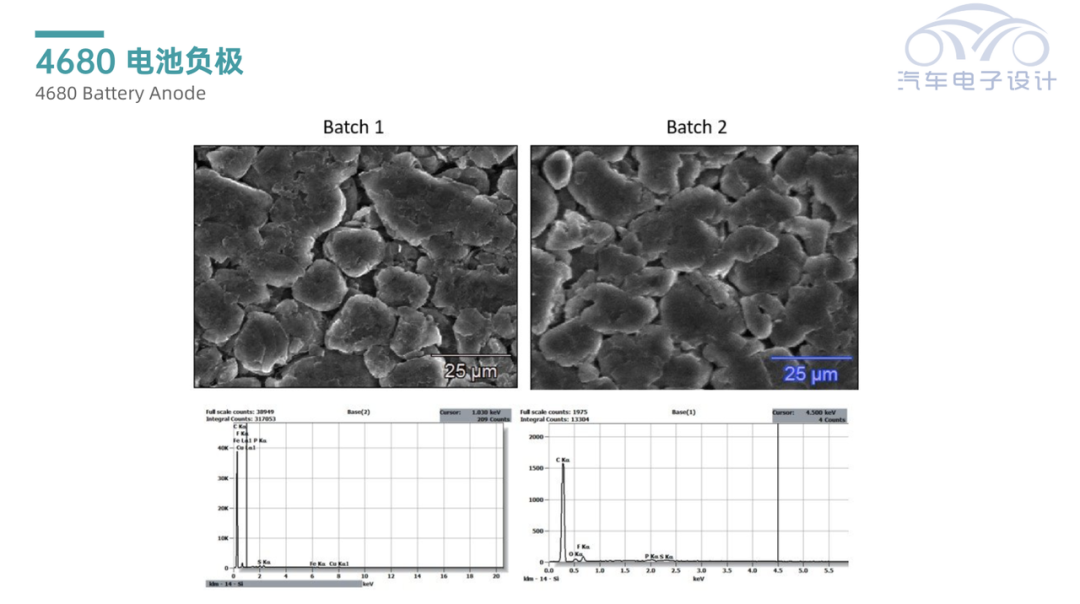
Test Data
Capacity Test
As for the capacity test, the capacity is only 23.35Ah under the test condition of 2.5A discharge, which is about C/10. The capacity is 20Ah under the test condition of 25A discharge, which is about 1C.
Impedance
Internal resistance is a key parameter. Using the HPPC pulse test data for measurement, the result is DCIR (charge/discharge): 7mΩ+/-2.
Therefore, the entire parameters are:
◎ Battery weight energy density = 244Wh/kg
◎ Battery volume energy density = 650Wh/L
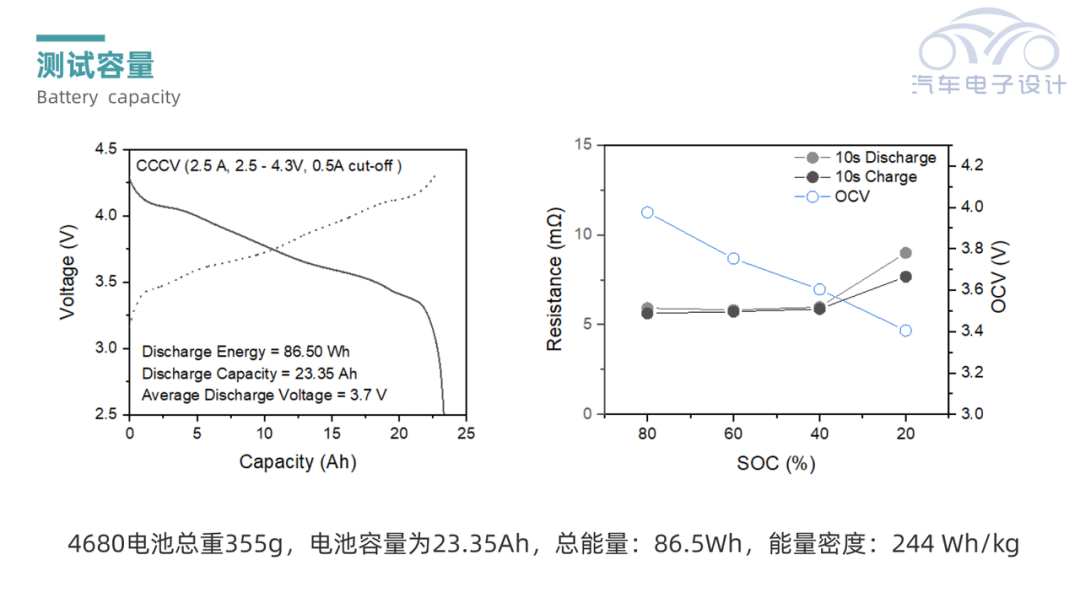
Tesla will begin to promote more versions of Model Y equipped with 4680 batteries from 2023. According to the three vehicle model data issued by the US Environmental Protection Agency (EPA) for the 2023 ModelY, including AWDModelYLongRange, AWDModelYPerformance, and AWDModelY, the 4680 battery began to be tested in production from spring to summer. The formula for the overall new 2023 ModelY version may also be improved. In the Q3 earnings conference, Elon said that he believes the cost of 1kWh battery can be reduced to $70 once the 4680 battery is fully integrated.Summary: At present, Tesla’s 4680 battery is at a conservative design phase because it has just entered its own selection and design stage after being sourced from Panasonic and LG. As the cost target and production volume increase, especially with LG and Panasonic’s construction of 4680 batteries, the formulation of positive and negative electrode materials will become more radical. It is expected that there will be significant performance improvements compared to the current state.
This article is a translation by ChatGPT of a Chinese report from 42HOW. If you have any questions about it, please email bd@42how.com.
